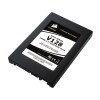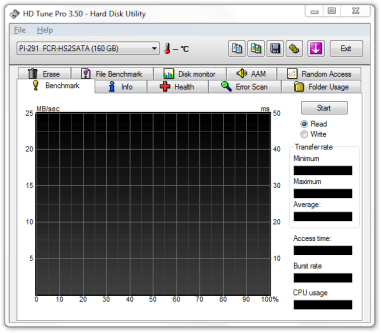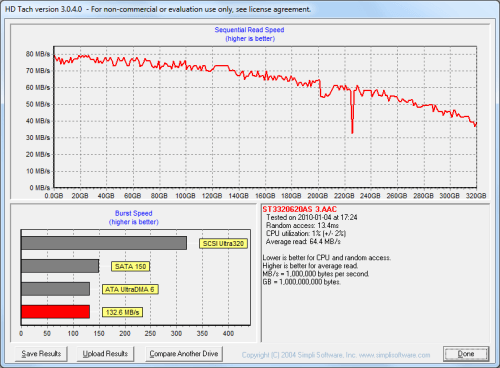- Qualcomm Launches Snapdragon 4 Gen 2 Mobile Platform
- AMD Launches Ryzen PRO 7000 Series Mobile & Desktop Platform
- Intel Launches Sleek Single-Slot Arc Pro A60 Workstation Graphics Card
- NVIDIA Announces Latest Ada Lovelace Additions: GeForce RTX 4060 Ti & RTX 4060
- Maxon Redshift With AMD Radeon GPU Rendering Support Now Available
Corsair Nova Series V128 128GB SSD

Over the past six months, Corsair has been phasing out its older SSD line-up and replacing it with new series’ with catchier names, such as Reactor, Force and Nova. The latter is what we’re taking a look at here. The goal of the Nova series is to offer huge bang for the buck, and as we’ve seen throughout our testing, Corsair has hit its mark.
Page 6 – Synthetic: HD Tune Pro 3.5, HD Tach RW3
HD Tune Pro 3.5
HD Tune has long been one of our favorite storage benchmarks, thanks in part to its ease-of-use, and its ability to deliver consistent results (which is obviously important). Since we are using HD Tune on storage devices that also house our OS, we’re unable to test the write performance, so here, we stick to both Read and Access Times.


Once again the Nova edges out the Vertex Turbo with higher read results, likely due to additional firmware optimizations done since the Vertex Turbo was evaluated. Again the Barefoot controller in those drives posts slightly better results with the 4KB and 512B file sizes over the Vertex 2, at least with this one program.
Yet again we show access times as these are the hallmark of solid-state drives, and I can’t underscore this point enough. The dirty state of the G1 leaves it with a particularly high result here, but even the G1 and other SSDs all put in results an order of magnitude better than the platter-based drive with small file reads.
HD Tach RW/3
HD Tach is a program similar to HD Tune, and although it hasn’t been updated in a few years, it’s still decent for testing SSDs. It offers a different method for calculating burst rates, as well as offering access time measurements below 0.1ms, which is unfortunately the limit for HD Tune. With a massive new program rewrite in the works, we look forward to seeing what the upcoming new version can do.


HD Tach’s age might be showing here, and we can only hope that the announced future rewrite of the program brings it up to date with storage technology. The Vertex 2 ranks in just above the old Summit drive, but given the best read results are held by a JMicron based drive and other similarly fast drives also fared poorly we aren’t going to give this test too much credence.
HD Tach is another program designed to measure platter-based drives (hence the downward curve in the image) but is capable of measuring access times below 0.1ms if the platform is up to the challenge. For the hard drive, the 13ms access latency is typical for a standard mechanical drive, but even a VelociRaptor would only decrease the latency to 7ms, a far cry from 0.1ms any SSD typically achieves. This clearly illustrates the drawback to RAIDing traditional mechanical drives.
Support our efforts! With ad revenue at an all-time low for written websites, we're relying more than ever on reader support to help us continue putting so much effort into this type of content. You can support us by becoming a Patron, or by using our Amazon shopping affiliate links listed through our articles. Thanks for your support!






